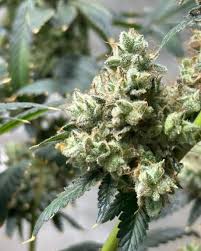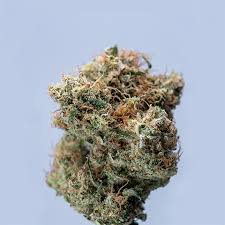
Unlocking the World of Cannabis Seeds in California
California has long been at the forefront of cannabis culture in the United States. With its diverse climate and forward-thinking legislation, it’s not surprising that the state has become a hub for cannabis enthusiasts and growers alike. Whether you’re a seasoned cultivator or a curious beginner, understanding cannabis seeds in California is essential for successful cultivation. For more information, check out cannabis seeds california https://kindseed.com/usa/marijuana-seeds-california/ to kickstart your cannabis growing journey.
The Legal Landscape of Cannabis in California
Since the passage of Proposition 215 in 1996, California has allowed the medical use of cannabis, and more recently, the recreational use was legalized with Proposition 64 in 2016. These measures made California a pioneer in the cannabis movement, leading to the establishment of a rigorous regulatory framework. Growers are now able to cultivate cannabis for both personal and commercial use, provided they adhere to local laws and regulations. Understanding this legal landscape is crucial for anyone interested in growing cannabis seeds in California, as local ordinances can vary widely.
Understanding Cannabis Seeds
When embarking on the journey of cannabis cultivation, the first step is understanding the different types of cannabis seeds available. Generally, there are three main categories: regular seeds, feminized seeds, and auto-flowering seeds.
- Regular Seeds: These seeds carry both male and female chromosomes, allowing growers to produce both male and female plants. While they can be beneficial for breeding purposes, they can complicate cultivation as males do not produce the consumable flower.
- Feminized Seeds: These seeds are specifically bred to produce only female plants, which are the ones that produce the sought-after buds. Feminized seeds have gained immense popularity among growers due to their reliability and higher yield.
- Auto-Flowering Seeds: These cannabis seeds switch from the vegetative stage to the flowering stage automatically, regardless of the light cycle. This makes them ideal for beginners and those looking for a quick turnaround.
Choosing the Right Strain
The next step in cultivating cannabis in California is selecting a strain suited to your growing conditions, preferences, and desired effects. Strains can be broadly categorized into three types: Indica, Sativa, and hybrid.
- Indica Strains: Known for their relaxing effects, Indica strains are often used during the evening or at night. They thrive in cooler climates, making them great for certain areas in California.
- Sativa Strains: These strains tend to be more uplifting and energizing, making them perfect for daytime use. They generally require more sunlight and warmer temperatures.
- Hybrid Strains: Hybrids are a combination of both Indica and Sativa and can offer a balanced experience. Depending on the genetics, they can exhibit traits from both parent strains.
Purchasing Cannabis Seeds in California

With the growing acceptance of cannabis in California, numerous dispensaries and online retailers offer high-quality cannabis seeds. When purchasing seeds, it is crucial to do so from reputable sources to ensure the viability and quality of the seeds. Look for sources that provide detailed descriptions of the strains, their growing conditions, yield expectations, and any grower reviews. Always check for compliance with California cannabis laws when making your purchase.
Essential Cultivation Tips
Once you have your cannabis seeds selected and acquired, the next step involves cultivating them properly to ensure a successful harvest. Here are some essential tips:
- Soil Preparation: Cannabis plants thrive in well-aerated, nutrient-rich soil. Consider amending your soil with organic matter like compost to provide the necessary nutrients.
- Watering: Proper watering is critical. Overwatering can lead to root rot, while underwatering can stunt growth. It’s important to strike the right balance.
- Lighting: For indoor growers, providing adequate lighting is crucial. Grow lights should mimic the sun’s spectrum; for outdoor growers, consider the sunlight patterns in your area.
- Pest and Disease Management: Healthy plants are less susceptible to pests and diseases. Regular monitoring and employing organic pest control methods can help maintain plant health.
Harvesting Your Cannabis
Harvesting is a crucial stage in cannabis cultivation, where timing can greatly affect the final product’s potency and quality. Growers should keep an eye on the trichomes—tiny resin glands on the buds. When they turn from clear to a milky white, it is generally an indication that the plant is ready for harvest. Some growers prefer to wait until the trichomes turn amber for a more sedative effect.
Once harvested, drying and curing are essential processes that will enhance the flavor and potency of your cannabis. Proper drying requires hanging the buds in a dark, humidity-controlled environment. After the initial drying phase, curing in jars allows the buds to develop their full potential over time.
Embracing Cannabis Culture in California
Cultivating cannabis is not only about growing plants; it’s about embracing a culture and community that celebrates this versatile plant. California hosts numerous cannabis events, workshops, and expos where enthusiasts can gather, learn, and share experiences. Joining local cultivation groups or participating in online forums can provide invaluable support and information as you navigate your cannabis-growing adventure.
The journey of cultivating cannabis seeds in California is both fascinating and rewarding. With the right knowledge, resources, and passion, you can successfully grow your own cannabis and become a part of California’s vibrant cannabis culture.
Final Thoughts
As cannabis continues to grow in popularity and acceptance, resources for aspiring growers are more abundant than ever. With California leading the charge, there has never been a better time to explore the world of cannabis seeds. Remember to stay informed about local regulations, choose the right strains, and invest your time into learning about cultivation techniques. Happy growing!